Breaking The News
- 21st February 2022
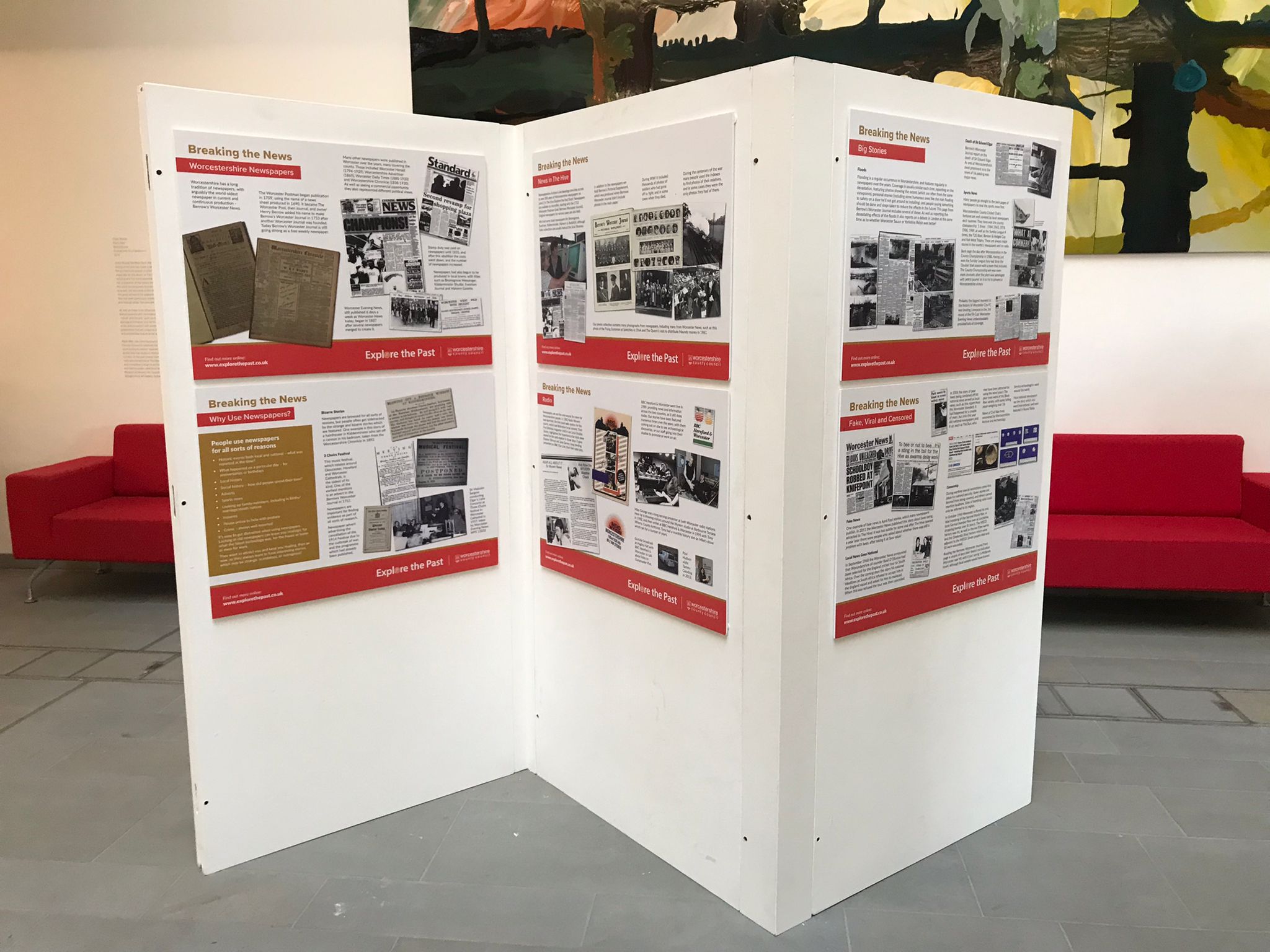
Worcestershire has a long tradition of newspapers, with arguably the world oldest newspaper in current and continuous production – Berrow’s Worcester Journal. The British Library has a new exhibition, Breaking The News, which is being currently shown in The Hive, and will tour around Libraries. To go alongside this we have created a display highlighting the rich heritage of local news and newspapers which can be discovered within our collections.
Newspapers
The Worcester Postman began publication in 1709, using the name of a news sheet produced in 1690. It became The Worcester Post, then Journal, and owner Henry Berrow added his name to make Berrow’s Worcester Journal in 1753 after another Worcester Journal was founded. Today Berrow’s Worcester Journal is still going strong as a free weekly newspaper.
Many other newspapers were published in Worcester over the years, many covering the county. These included Worcester Herald (1794-1929), Worcestershire Advertiser (1865), Worcester Daily Times (1880-1920) and Worcestershire Chronicle (1838-1930). As well as seeing a commercial opportunity they also represented different pollical views.
Stamp duty was paid on newspapers until 1855, and after this abolition the costs went down, and the number of newspapers increased. Newspapers had also begun to be produced in local towns, with title such as Bromsgrove Messenger, Kidderminster Shuttle, Evesham Journal and Malvern Gazette.
Worcester Evening News, still published 6 days a week as Worcester News today, began in 1837 after several newspapers merged to create it.

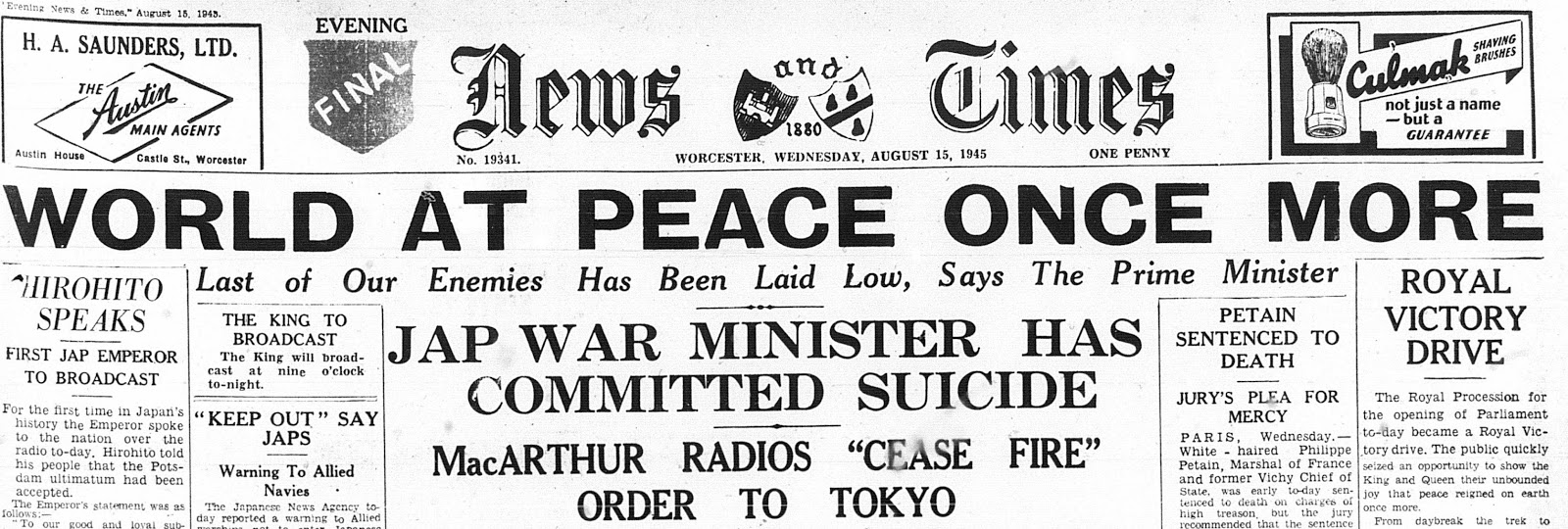
VJ Day reported in the Worcester Evening News
News in The Hive
Worcestershire Archive & Arch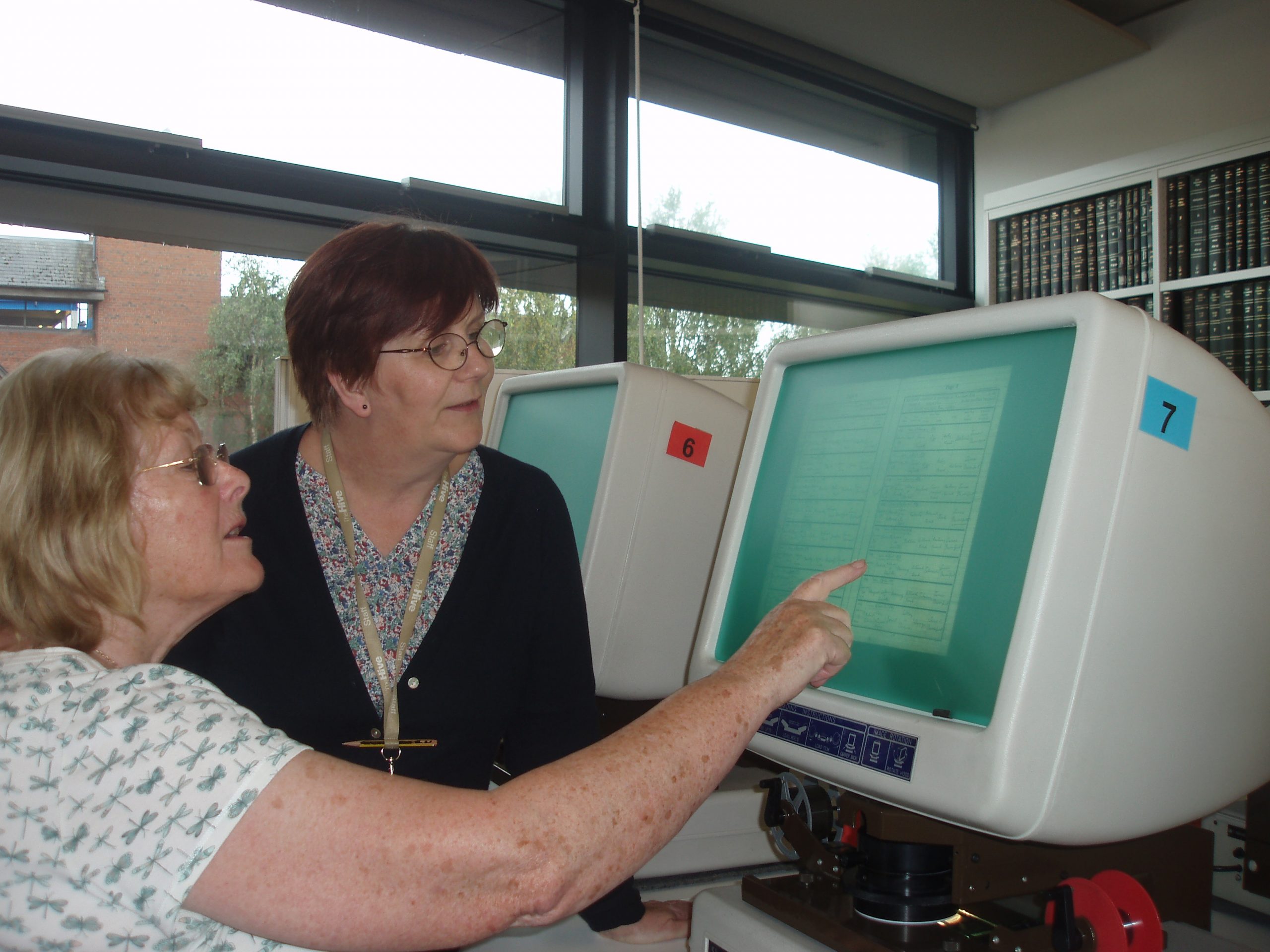 aeology provides access to over 300 years of Worcestershire newspapers on Level 2 in The Hive (Explore the Past floor). Newspapers are available on microfilm, starting with the 1713 Worcester Postman (later Berrows Worcester Journal). Original newspapers for various years are also held.
aeology provides access to over 300 years of Worcestershire newspapers on Level 2 in The Hive (Explore the Past floor). Newspapers are available on microfilm, starting with the 1713 Worcester Postman (later Berrows Worcester Journal). Original newspapers for various years are also held.
Why microfilm? Newspapers have been printed mostly on poor quality paper – as the saying goes, today’s news is tomorrows chip papers. Almost everyone throws away old newspapers, and if you ever leave out a newspaper in the sun it will go stiff and brittle. Libraries and archives are the exceptions to the rule as people come to us to see old newspapers. If you see old volumes of newspapers they are often crumbling away, so microfilm helps to provide access whilst preserving originals. Digitisation is an option, and specialist companies are providing access online. It requires the resources to do this and copyright permission, which we don’t hold.
We hold some local newspapers for Bromsgrove, Evesham, Kidderminster, Malvern & Redditch, although fuller collections are usually held at the local libraries.
In addition to the newspapers we hold Berrow’s Pictorial Supplement, which was produced when Berrows Worcester Journal didn’t include photos in the main paper. During WWI it included thousands of photos of soldiers who had gone off to fight, and in some cases when they died. During the centenary of the war many people used the indexes to find photos of their relatives, and in some cases they were the only photos they had of them.
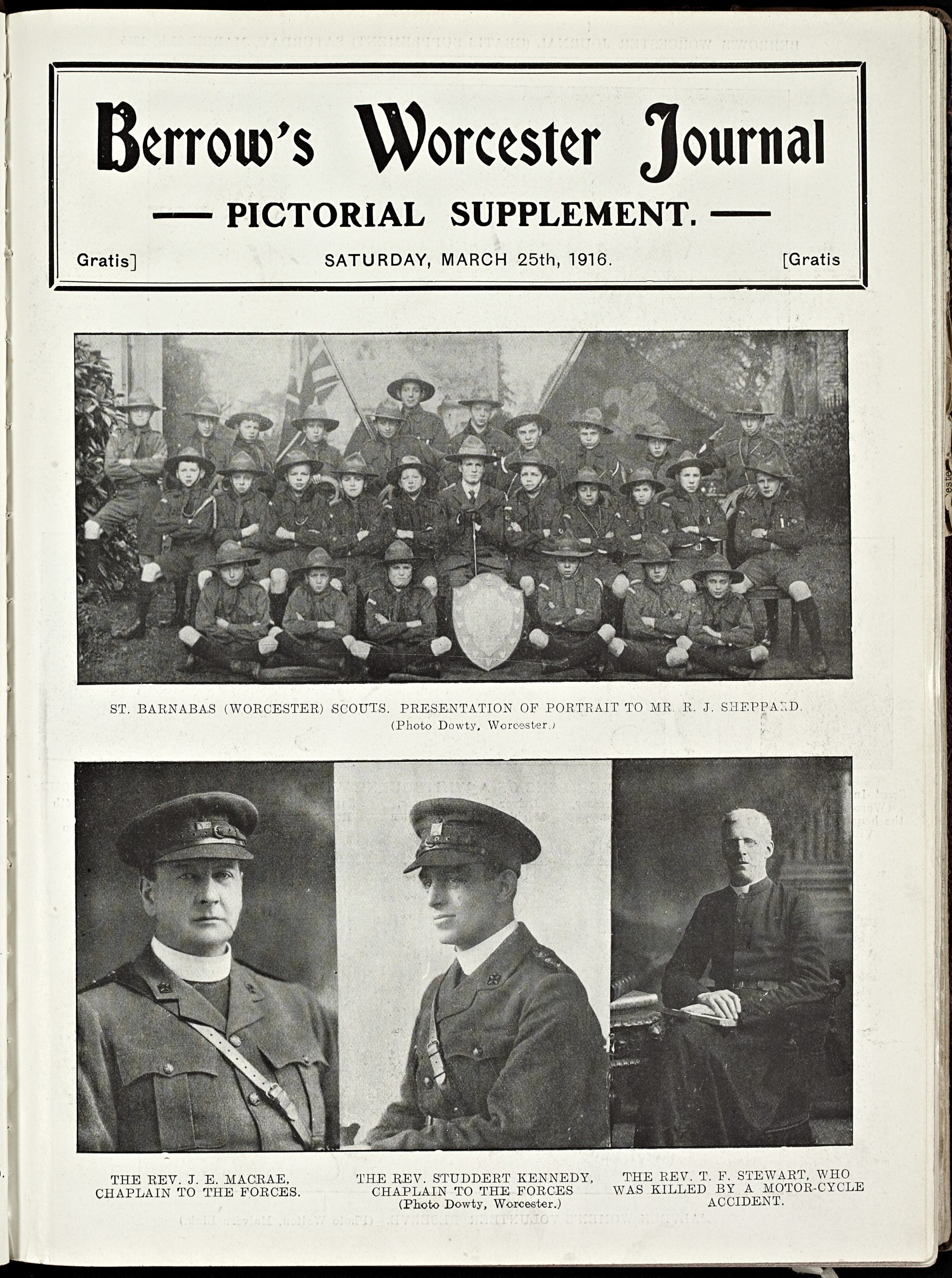
Our photo collection, Worcestershire Photographic survey, contains 80,000 images, many of which come from newspapers. Examples include these photos of The Queen’s visit to distribute Maundy money in 1981.
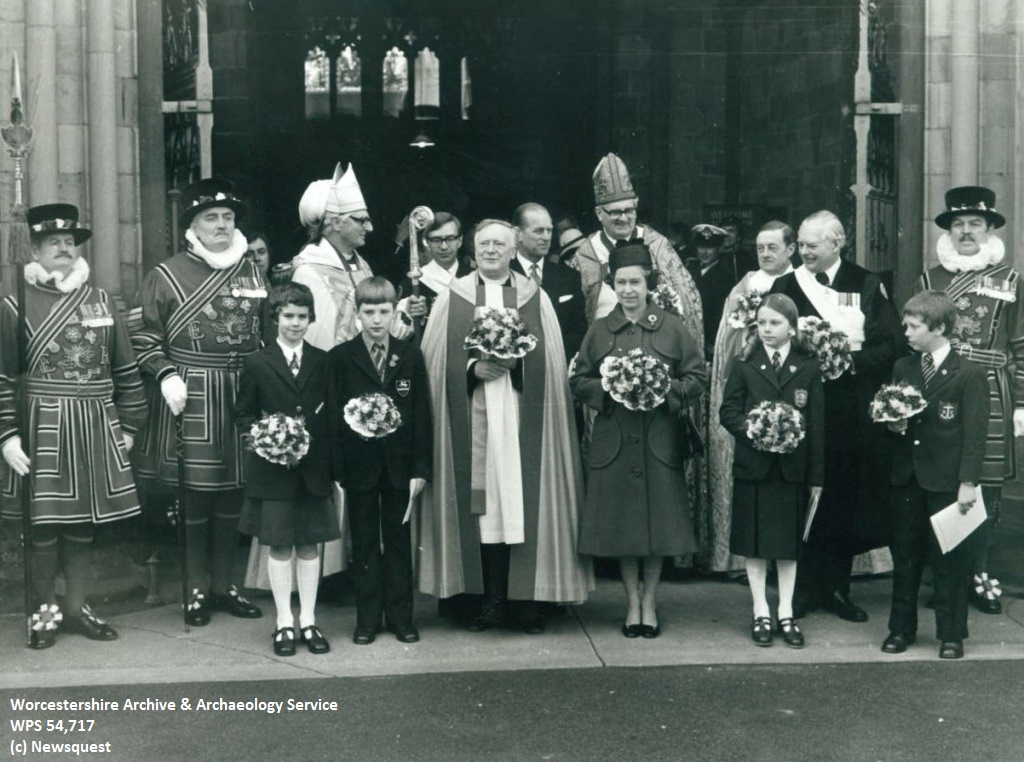
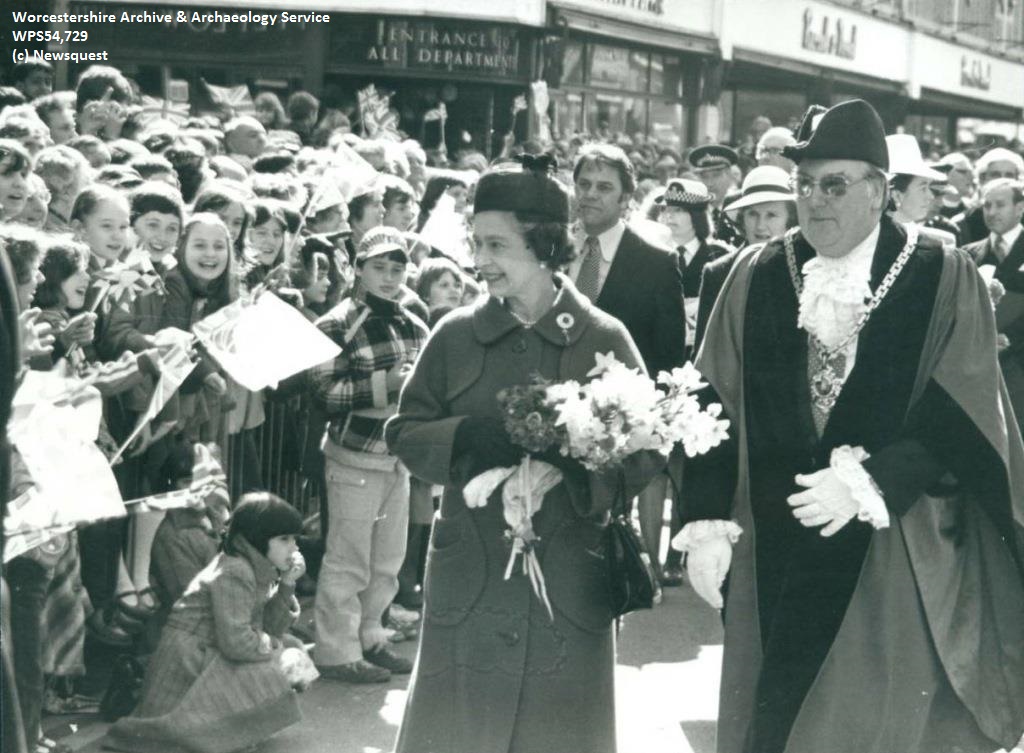
Why Use Newspapers?
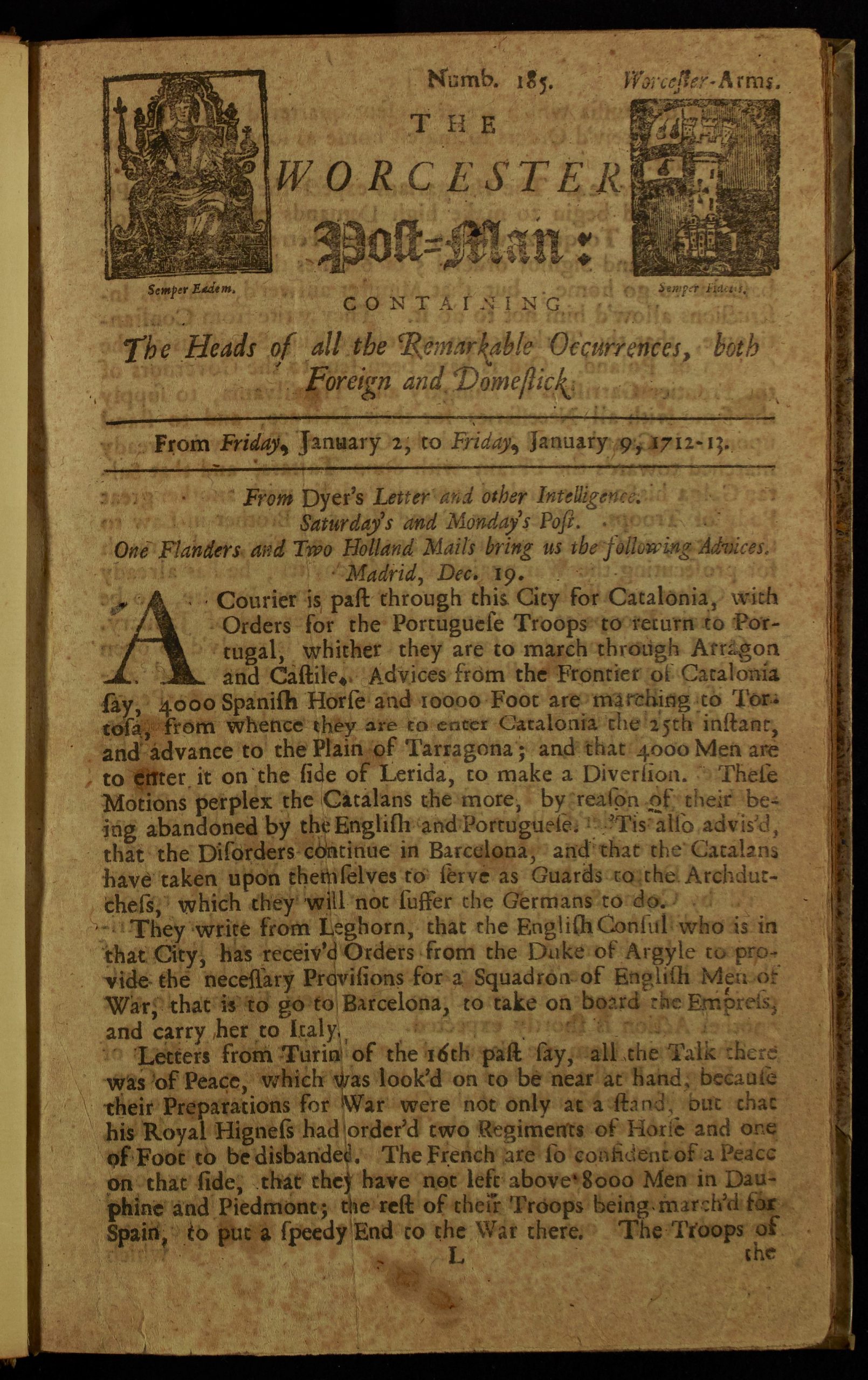 People use newspapers for all sorts of reasons
People use newspapers for all sorts of reasons
- Historic events both local and national – what was reported at the time?
- What happened on a particular day – for anniversaries or birthdays
- Local history
- Social history – how did people spend their time?
- Adverts
- Sports news
- Looking up family members, including in births/marriage/death notices
- Inquests
- House prices to help with probate
- Crime – always well reported
It’s easy to get distracted when using newspapers. Looking at old newspapers can leave you nostalgic for what the latest technology was, for the house or home or even for work.” They want to attract you and keep you reading, then as now, so they always want to have interesting stories, which may be strange, scandalous, or outrageous!
Bizarre Stories
Newspapers are browsed for all sorts of reasons, but people often get sidetracked by the strange and bizarre stories which are featured. One example is this story of a hairdresser in Kidderminster who set off a cannon in his bedroom, taken from the Worcestershire Chronicle in 1892.
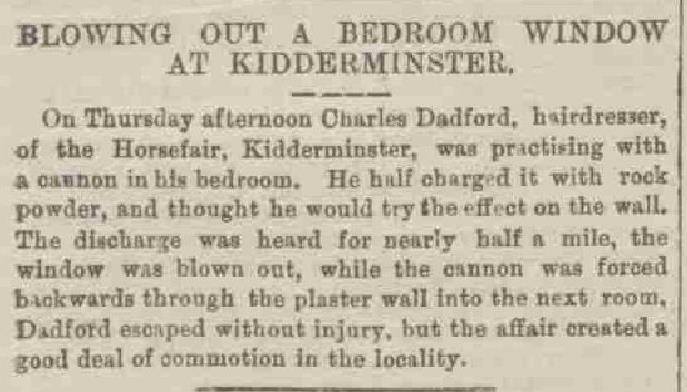
3 Choirs Festival
This music festival, which rotates around Gloucester, Hereford and Worcester Cathedrals, is the oldest of its kind. One of the earliest mentions is an advert in the Berrows Worcester Journal in 1752. Newspapers are important for finding evidence as part of all sorts of research.
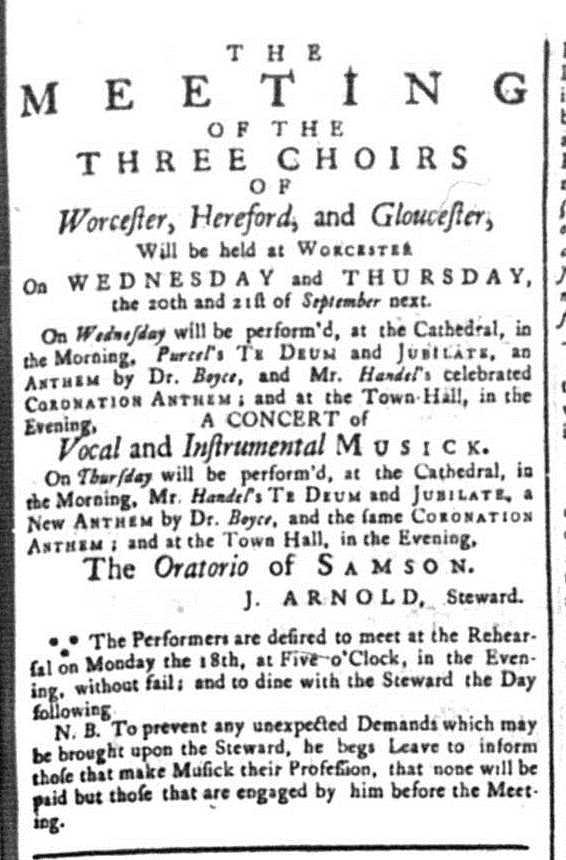
Newspaper advert advertising the cancellation of the 1914 Festival due to the outbreak of war.
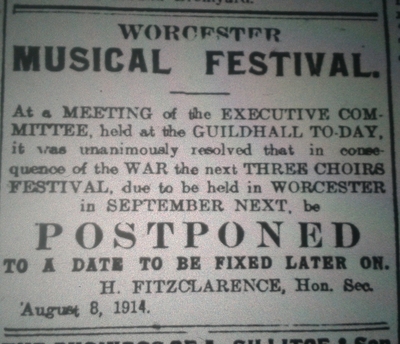
Sir Malcolm Sargent conducting Elgar’s Cello Concerto at Three Choirs festival in Worcester Cathedral in 1957, taken by Berrow’s Worcester Journal. WPS 13232
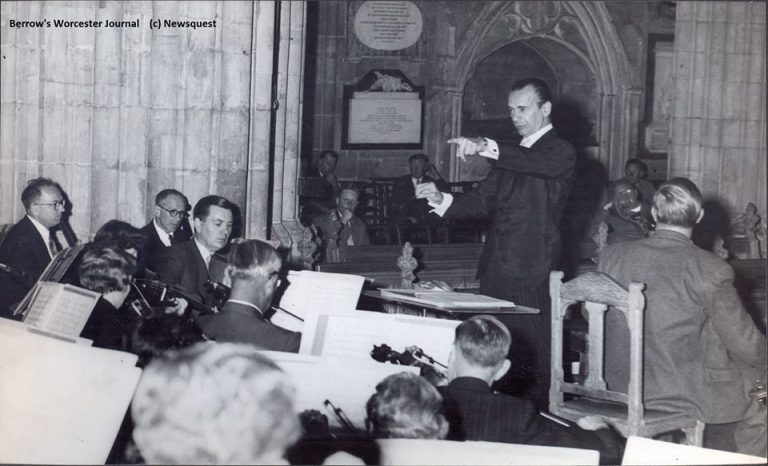
Breaking The News – Fake, Viral and Censored
Fake News
One example of fake news is April Fool stories, which many newspapers publish. In 2011 the Worcester News published this story about bees being attracted to The Hive! It was too subtle for some and after The Hive opened a year later there were people who asked about whether there was still a problem with bees, after taking it at face value!

Local News Goes National
In September 1968 the Worcester News announced that Worcestershire all rounder Basil D’Oliveira had been selected for the England cricket tour to South Africa. Over the coming days the story hit national headlines as South Africa refused to accept him in the England squad and asked for him to replaced. When this was refused the tour was then cancelled.
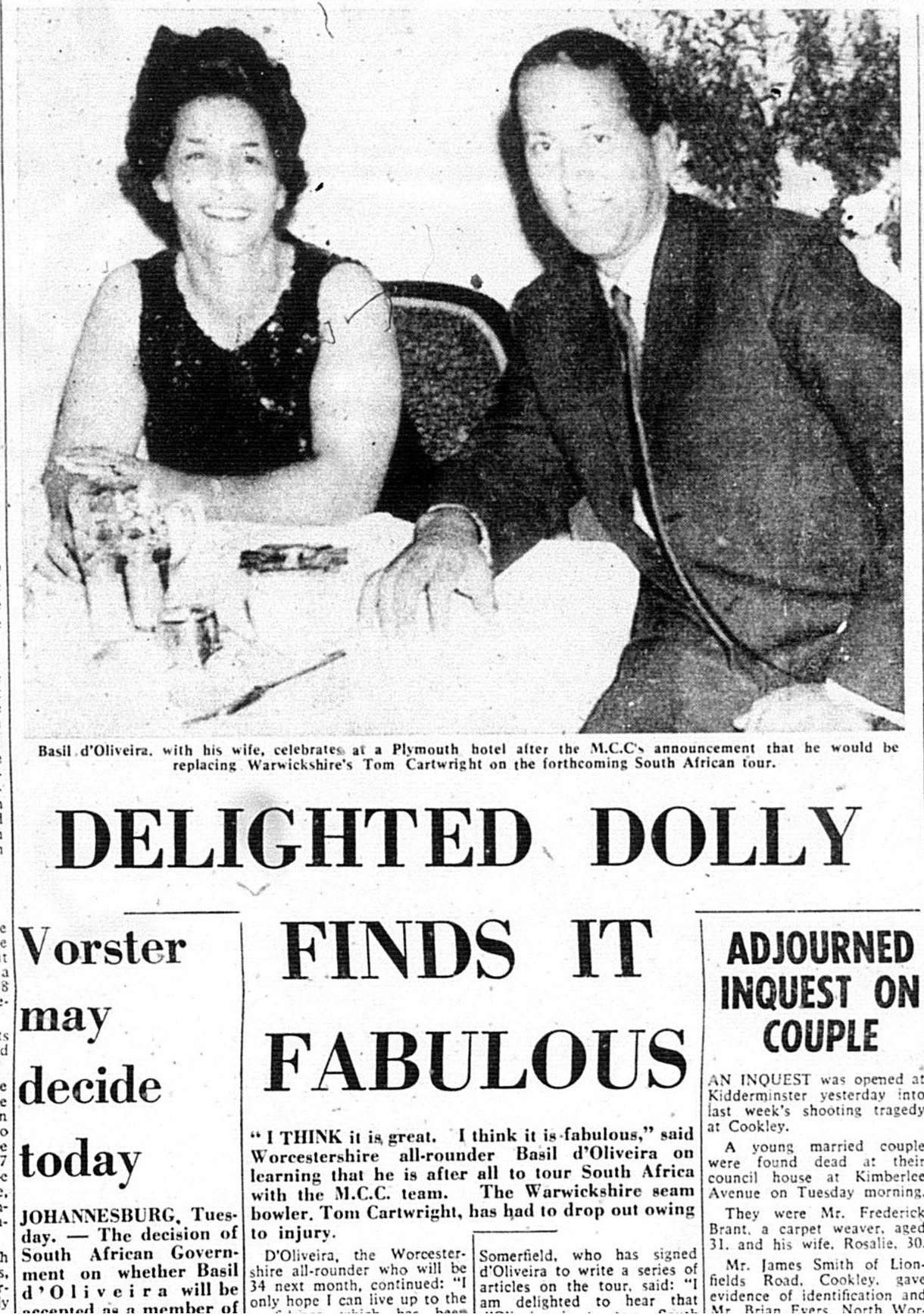
In 2006 the story of pear trees being cordoned off hit national news as well as local news, such as this report from the Worcester Standard. It had happened for a couple of years, but only this year did national newspapers pick it up, such as The Sun, who may have been attracted by using the word pears! The pear trees were of the Black Pear variety, with some falling pears weighing over 1lb.

Some of our won stories have gone far and wide. Items from the Battle of Worcester battlefield not only went national (including The Sun and BBC), but international too, such as being picked up by Russia Today.

Censorship
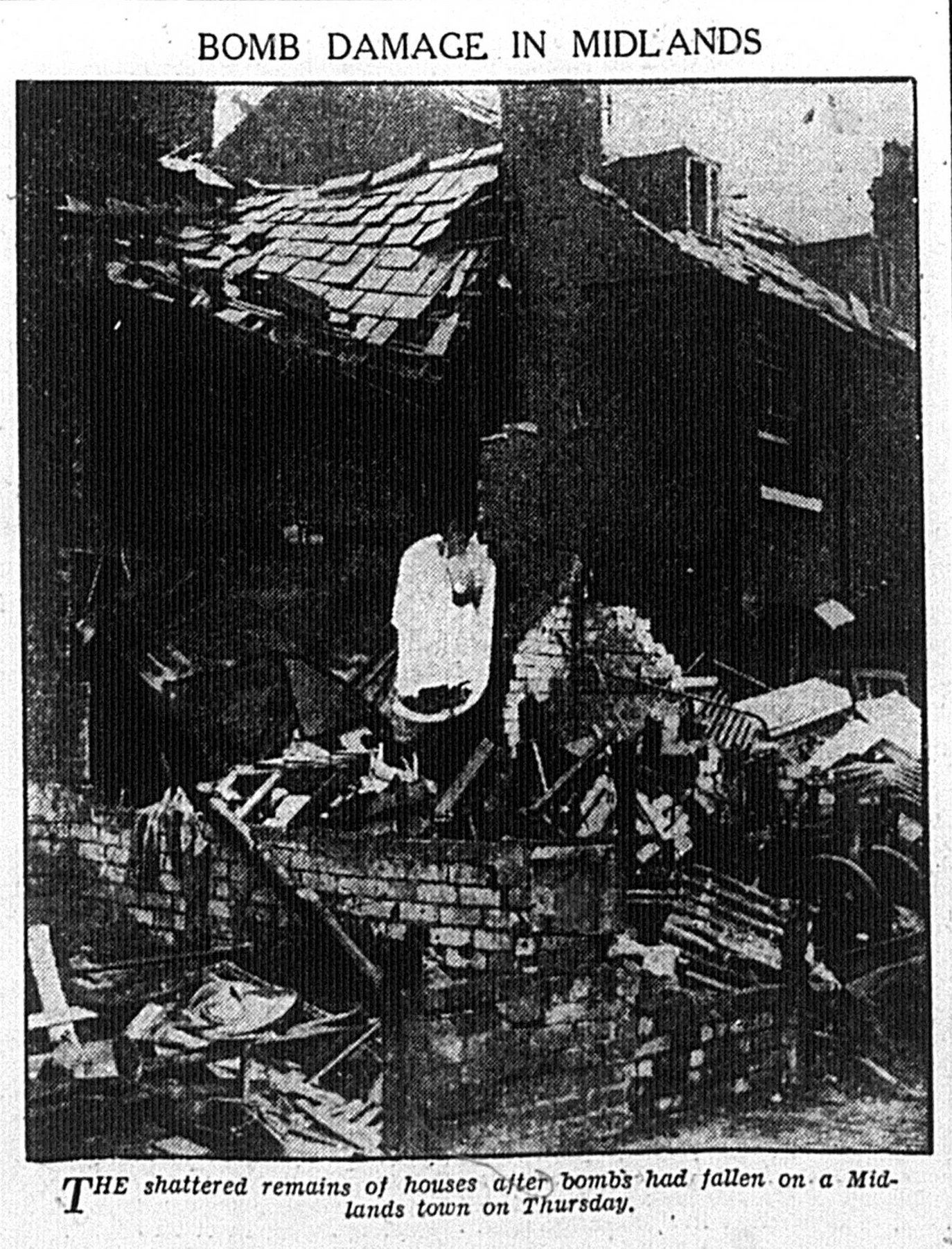 During wartime special restrictions come into place for national security. Some stories are banned from being covered, and others cannot mention locations. Sites of bombing raids could only be referred to by region.
During wartime special restrictions come into place for national security. Some stories are banned from being covered, and others cannot mention locations. Sites of bombing raids could only be referred to by region.
In October 1940 Worcester suffered its only fatal bombing of the Second World War. A lone German bomber flew over at lunchtime, dropping bombs over St John’s. The MECO factory was hit, as well as the old Eltex works and the Cinderella Shoe factory which were adjacent to the MECO. Seven people died and 50 were wounded.
Reading the Berrows Worcester Journal front page a couple of days later there’s no indication Worcester was hit, with it just saying ‘a Midlands town’, although local people would have known.
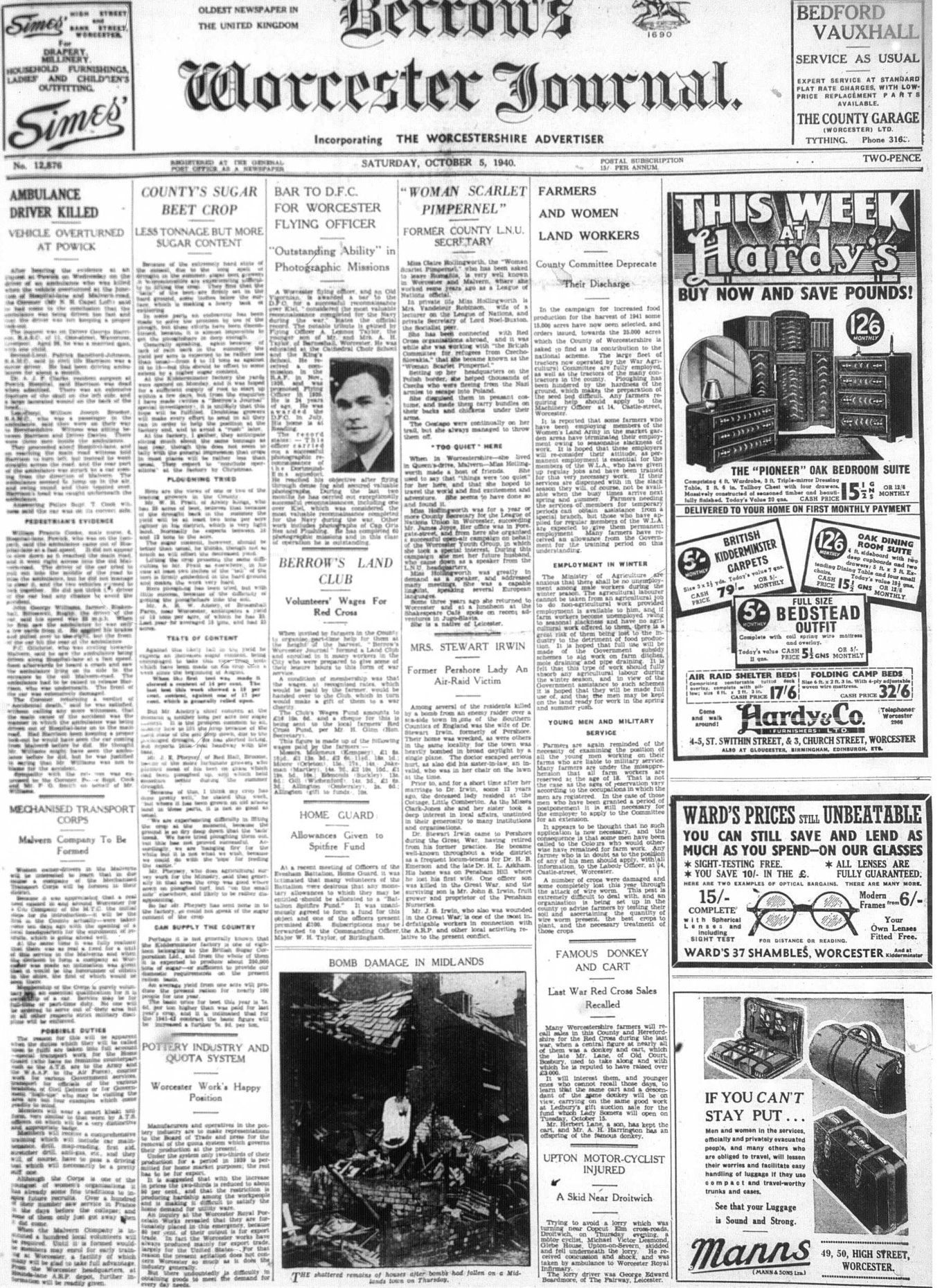
Breaking The News – Big Stories
Floods
Flooding is a regular occurrence in Worcestershire, and features regularly in newspapers over the years. Coverage is usually similar each time, reporting on the devastation, featuring photos showing the extent (which are often from the same viewpoints), personal stories (including some humorous ones like the man floating to safety on a door he’d not got around to installing), and people saying something should be done and steps taken to reduce the effects in the future. This page from Berrow’s Worcester Journal includes several of these. As well as reporting the devastating effects of the floods it also reports on a debate in London at the same time as to whether Worcester Sauce or Yorkshire Relish was better!


Death of Sir Edward Elgar
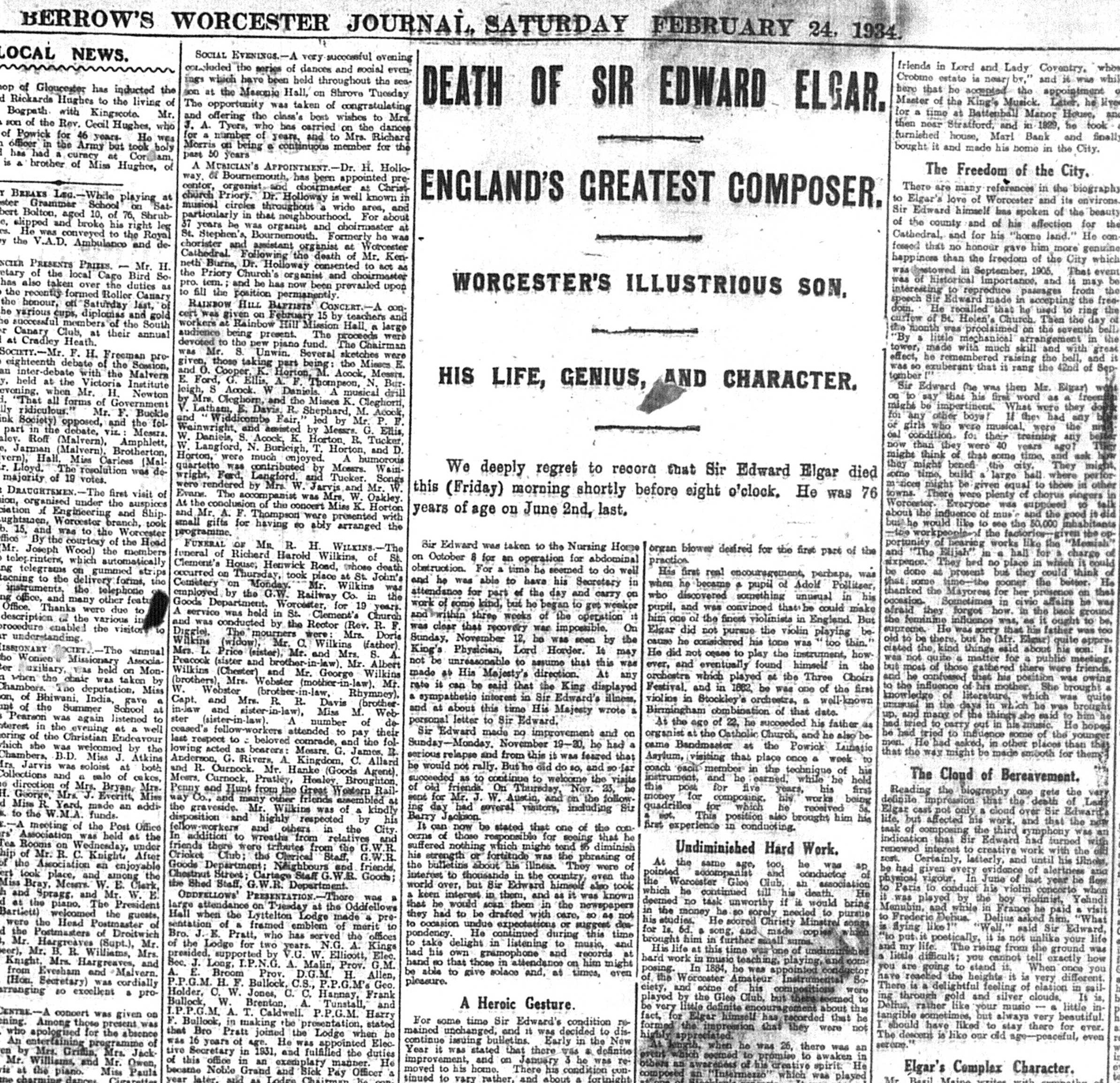
Berrow’s Worcester Journal report on the death of Sir Edward Elgar. As one of Worcestershire’s most prominent sons the news of his passing was major news
Sports News
Many people go straight to the back pages of newspapers to read the sports news first.
Worcestershire County Cricket Club’s fortunes are well covered by local newspapers each summer. They have won the county championship 5 times – 1964, 1965, 1974, 1988, 1989, as well as the Sunday League 4 times, the T20 Blast, Benson & Hedges Cup and Nat-West Trophy. These are always major stories in the county’s newspapers and on radio.
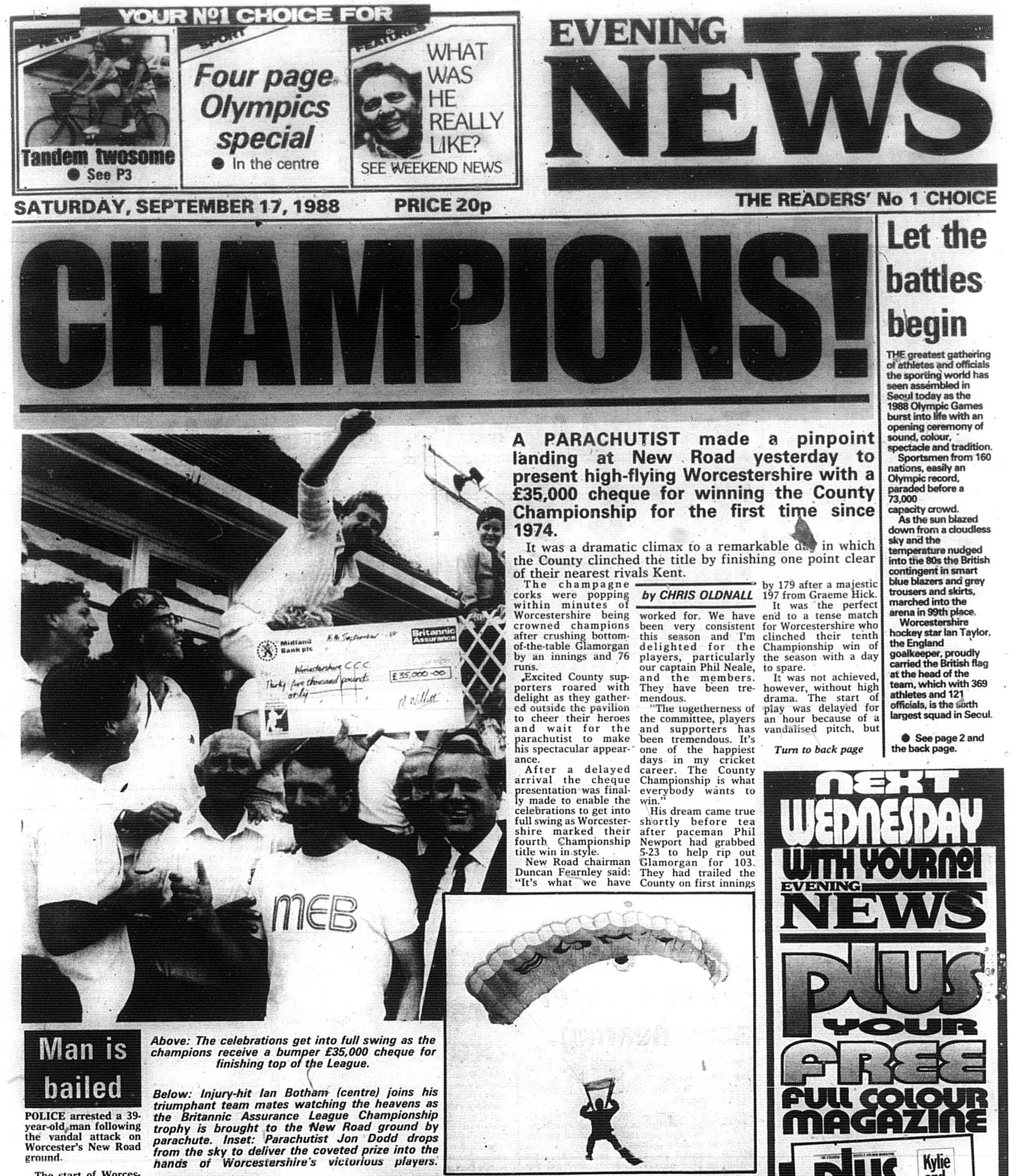
Back page the day after Worcestershire in the County Championship in 1988. Having just won the Sunday League they had done the ‘Double’ that season with a team that included. The County Championship win was even more dramatic after the pitch was sabotaged with petrol poured on it to try to prevent a Worcestershire victory.
Probably the biggest moment in the history of Worcester City FC was beating Liverpool in the 3rd round of the FA Cup! Worcester Evening News understandably provided lots of coverage.

You can also read our feature on Worcestershire Radio, which is also part of the exhibition.
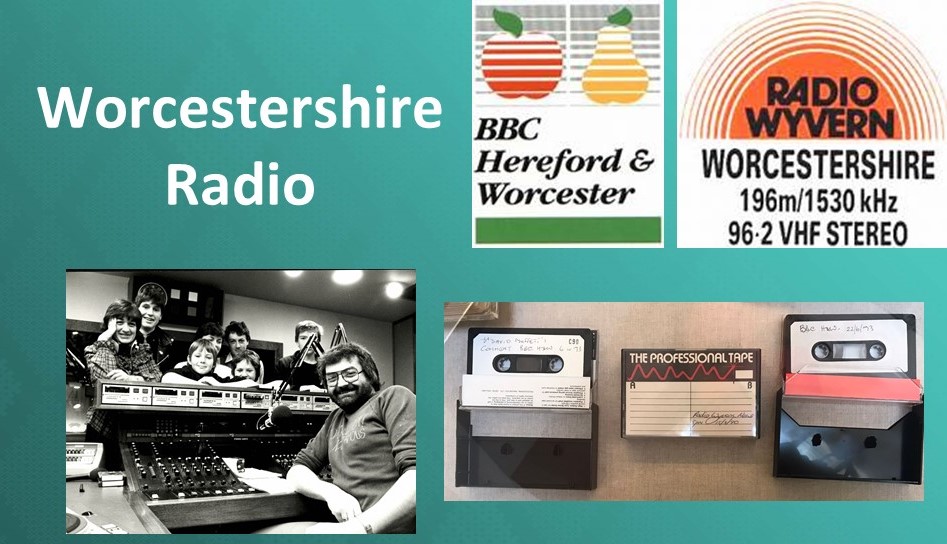
Post a Comment